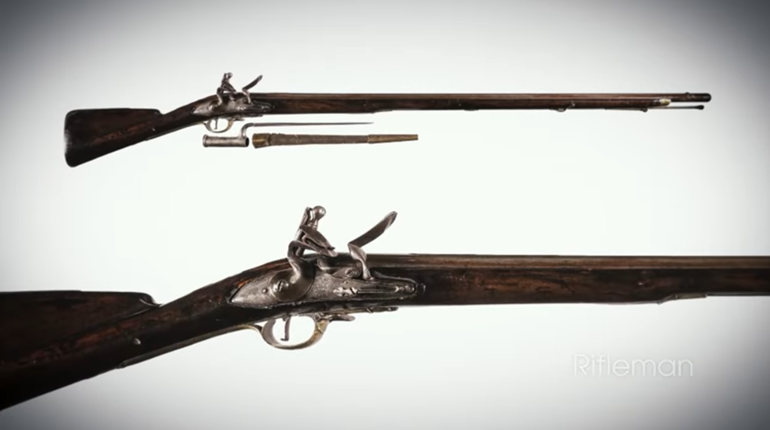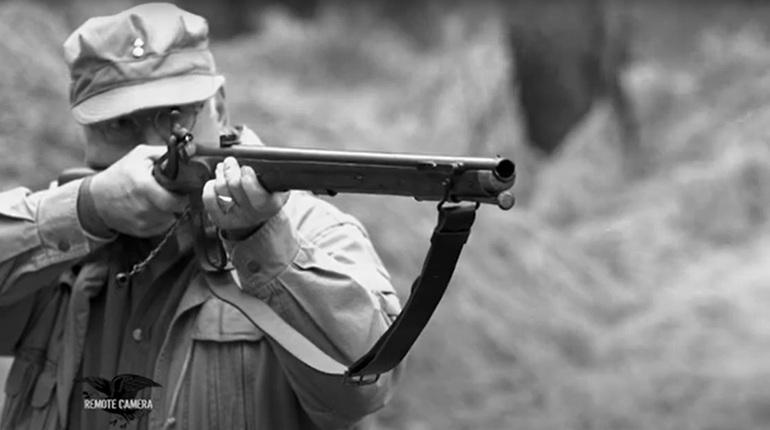
During the late 1700s, the Ohio River was a very dangerous place. A watery boundary marker, it divided white settlements on the south bank from Indian lands on the north bank. But it was an uneasy standoff. Violent skirmishes between frontiersmen and Indians were taking place regularly on both sides of the river, many of them with deadly consequences.
Just such a recent skirmish had cost Tom Mills, Sr. his son. The junior Mills had been caught north of the Ohio by a dozen Delaware Indians who had shot and wounded him, finishing the job with a swift tomahawk blow to the head. The Indians then took the young man’s scalp.
The senior Mills had become so distraught at the death of his son that it was all he could think about. Recognizing he was slowly descending into a deep depression, he knew he needed some type of distraction and thus turned to his favorite pastime: fishing. Possibly, spending some time on the water would ease his all-consuming anguish.
The Ohio River was full of large game fish—bass, pike, muskellunge, catfish—and Mills was good at catching them, often selling or bartering his extra fish to other frontiersmen and their families living in the Wheeling area. On this particular day Mills decided to paddle his canoe to a fishing hole he knew well, the mouth of a small tributary stream along the north shore of the Ohio named Glen’s Run.
Months earlier at the same location he had baited his hook with a piece of rancid deer liver and swung it with a large cane pole and line out over a submerged log, quietly dropping it into the water. Within seconds he saw what appeared to be a large part of the log disengage itself from the main trunk, move to the bait and engulf it. Mills had caught many 30-pound flathead catfish before, even a couple 40-pounders, but this giant cat had to be nearly twice that size!
The fight was fierce but brief. The huge brown and yellow catfish was hooked for only a few seconds before the cane pole snapped and the fish escaped. Undaunted, Mills returned a week or so later with a sturdier line and pole, only to have the same thing happen. A month after that he tried a third time, but without a pole. This time he tied the fishing line directly to the boat; however, when the big catfish hit, it fought so hard that the hook straightened and the fish got off and swam away yet again.
Now today (Tuesday, July 30, 1782), Mills arrived at dawn for a fourth try, only this time with reinforcements. Accompanying him were two younger men, Henry Smith and Hamilton Carr, both age 18. As the trio approached the north shore of the Ohio, Mills explained his strategy—he planned to harpoon the large catfish.
He had taken a three-tined pitchfork, straightened its tines and forged wicked metal barbs at the ends of them. Carr was instructed to silently pole the canoe to the location of the fish; Smith was to hold the rope attached to the handle of the pitchfork; and Mills would gig the giant creature as soon as he got a chance.
The plan worked to perfection, with Mills raising his arms high over his head before swiftly driving the tines of the pitchfork into the water and deep into the unsuspecting catfish’s body just behind its head. The fish went berserk, exploding from the shallows in a spray of water mixed with blood, then dove deep. The fight lasted many minutes before the giant cat eventually tired and was hauled to the side of the boat where Smith and Mills grabbed it and hoisted it aboard, still thrashing. None of the three men had ever seen a fish of any kind as large.
In all the excitement, whooping and hollering, the canoe had drifted from Glen’s Run into the main current of the Ohio and then on downstream. It was as the trio was still shouting, laughing and backslapping each other in congratulations that rifle shots rang out from the north shore. Some 30 Wyandot Indians had heard the commotion of the men, crept through the dense woods to investigate, and spotted the canoe floating just 40 yards offshore. Cocking their flintlock rifles, they took aim and fired simultaneously.
Mills was a large man and most of the Indians must have aimed at him, because he was hit multiple times with lead balls and slumped groaning into the bottom of the boat alongside his prized catfish. Smith was struck by a bullet that grazed his groin, but Carr was not hit. The Indians then quickly reloaded and gave the three frontiersmen another volley. Again, Mills was hit multiple times. It was then that Carr threw down the pole he had been using to propel the boat through shallow water, grabbed a paddle and struck out for Wheeling for all he was worth.
The settlers at Wheeling had heard the shots from upstream and were anxiously waiting along the shoreline when the canoe came into view and eventually slid to a stop in the sand. Grabbing Mills, who was by then more dead than alive, they quickly carried him to the cabin of Ebenezer and Elizabeth Zane, the couple who had started the Wheeling settlement in 1770.
Elizabeth “Betty” Zane was the quintessential frontier woman and wife. Her medical skills included acting as midwife to the younger women of the settlement, while patching up their men folk when they needed it. But in all her wilderness experiences she had never seen anyone as bad off as Tom Mills. When she and two women assistants stripped off his bloody clothes they counted no fewer than 17 bullet wounds in his body and two graze marks.
Had he been taken to a military surgeon of the day, Mills likely would have had an arm and leg amputated. Betty Zane had no interest in that, so got to work extracting bullets and setting broken bones. She did her best, but when finished still had no idea whether Tom Mills would live or die.
Mercifully, he had passed out during the lengthy surgery, regaining consciousness about an hour later. And when he did, Betty had a pretty good idea that Mills would survive because the first question he asked in a strained, whispered voice was, “Mrs. Zane, how much did that d*mned catfish weigh?”
She had no idea but told him she would find out, and left the room. Minutes later she returned smiling and said, “Mr. Mills, your catfish weighed exactly eighty-seven pounds.”
“Almost makes it worth it…,” Mills replied, before lapsing into unconsciousness again.
Tom Mills, Sr. survived his many wounds, but his 87-pound Ohio River trophy shovelhead catfish did not. It was eaten by the residents of Wheeling.







































